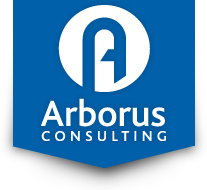The 2012 Ontario Building Code came into effect on January 1, 2014. Included in the new Code is an updated version of Supplementary Standard SB-10 (available only in hard copy), which contains requirements for building energy efficiency, CO2 emissions, and peak electric demand. Although the energy efficiency requirements are largely unchanged from the previous version of SB-10, the addition of CO2 and peak demand requirements may present unforeseen challenges to project teams seeking a building permit in 2014.
Energy Efficiency
The three energy efficiency compliance paths contained in the previous version of SB-10 remain in the updated version, namely:
- Achieve 25% energy savings over the Model National Energy Code for Buildings 1997 (MNECB)
- Achieve 5% energy savings over the ASHRAE 90.1-2010 reference building
- Achieve the energy efficiency level attained by conforming to requirements of ASHRAE 90.1-2010 as modified by Chapter 2 of SB-10
For the first two options, compliance is demonstrated through energy modelling. For the third path, compliance is typically demonstrated using a prescriptive checklist approach. The new Code introduces a fourth compliance option:
- Achieve energy efficiency level attained by conforming to requirements of the 2011 National Energy Code for Buildings (NECB) as modified by Chapter 3 of SB-10
This new compliance path will be supported by the imminent release of the CAN-QUEST building modelling tool, which will automatically generate an NECB 2011 reference building for comparison to the proposed building.
CO2 Emissions
The updated SB-10 places limits on the annual CO2 emissions allowed from a building. The following CO2 emission requirements apply to the corresponding energy efficiency compliance paths listed above:
- MNECB 1997 Compliance Path – Proposed building must emit 25% less CO2 than the MNECB 1997 reference building
- ASHRAE 90.1-2010 + 5% Compliance Path – Proposed building must emit 5% less CO2 than the ASHRAE 90.1-2010 reference building
- Proposed building is considered to meet the SB-10 CO2 emission requirements if it meets the prescriptive requirements of ASHRAE 90.1-2010 + Chapter 2
- Proposed building is considered to meet the SB-10 CO2 emission requirements if it meets the prescriptive requirements of NECB 2011 + Chapter 3
For buildings pursuing energy modelling compliance paths, SB-10 cites a CO2 emission factor of 0.400 kg-CO2e/kWh for grid electricity and 0.191 kg-CO2e/kWh for natural gas. Therefore, if a building replaces electricity with natural gas, annual CO2 emissions will decrease (for Code purposes).
Peak Electric Demand
New peak electric demand requirements have been introduced to SB-10 to help limit stress on provincial transmission networks, particularly in the downtown Toronto core. There are two options to demonstrate compliance with the peak electric demand requirements:
- Building must meet prescriptive requirements of ASHRAE 90.1-2010 + Chapter 2 for cooling equipment efficiency, fan power limitations, and interior lighting power densities
- Building must meet prescriptive requirements of NECB 2011 + Chapter 3 for cooling equipment efficiency, fan power limitations, and interior lighting power densities
Note that either peak demand compliance path may be pursued, regardless of which energy efficiency or CO2 emissions compliance path is used.
The resource conservation and environmental integrity requirements of the Ontario Building Code have become more stringent with the new version of the Code. Detailed knowledge of the Code’s energy, CO2, and peak electric demand requirements will help project teams avoid permitting delays. Project teams are encouraged to consult professionals familiar with the Code and SB-10, as a tailored compliance approach may be required for some building designs.
Please note that the above discussion is for educational purposes only and some requirements been simplified for clarity. Please consult the OBC documentation for official language and guidance on all Code requirements.

Trackbacks/Pingbacks